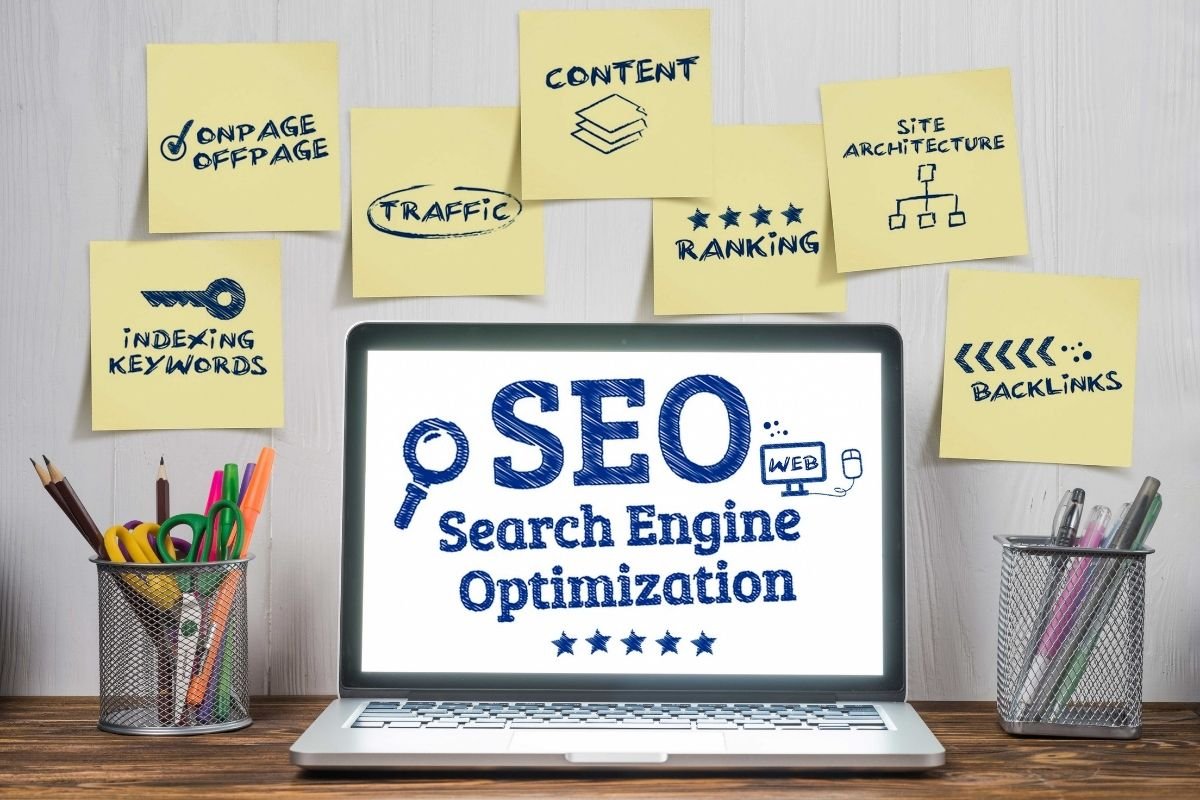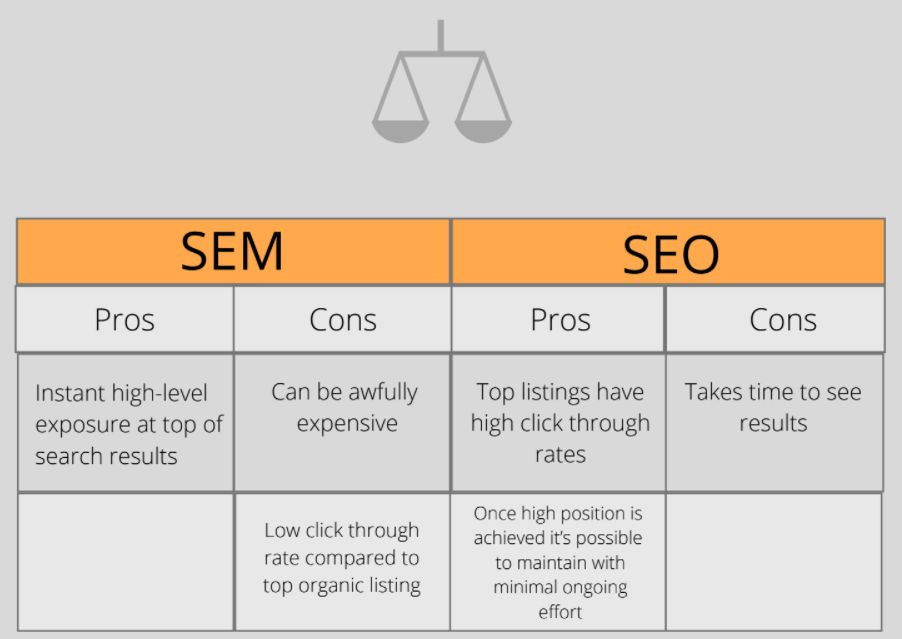SEM vs SEO: What’s the difference?
SEO and SEM are two ways you can drive traffic to your business website via search engines like Google. The advantage of this type of traffic is that you can target customers in the ready to buy stage. These customers are actively looking to do business and are looking for a suitable business. In this post we’ll explore what each of these acronyms are and the differences between the two and some of the pros and cons of each method.
SEM
SEM or Search Engine Marketing, also known as PPC Pay Per Click, are programs like Google Ads (formerly known as Adwords) wherein a business pays Google directly to have their ad listed at the top (or bottom) of the search results page.
Each time a visitor clicks on the company’s ad, they pay Google a fee.
Google Ads have varying click through rates depending on the industry but the average clickthrough rate across industries is about 1.91%.
SEO
SEO or Search Engine Optimisation
Refers to the process of making alterations to a website to make it appear trustworthy and authoritative according to Google’s algorithm leading Google to rank it higher in its search results.
Unlike SEM, SEO does not involve paying Google directly.
These search results are referred to as organic search results since they are deemed to be the most relevant trusted web pages for Google to provide to the user based on their search query.

SEM Pros and Cons
SEM is fairly straightforward; you simply have to pay a fee every time someone clicks your ad. The exact fee will depend on several factors, but it ultimately comes down to how competitive the keyword is, as it’s a bidding system. The more other businesses are willing to pay for a click the higher the price.
It can be anywhere from a couple of dollars up to $50+.
As you can see this can quickly blow out marketing budgets if not executed thoughtfully. Whether or not it’s the right solution for your business all comes down to how much a lead is worth to your business and the amount you’d be willing to invest for leads.
The main benefit of the SEM strategy is that results are instant. As soon as an advertising campaign has begun your website will be up at the top of the search results page.
SEO Pros and Cons
SEO is considerably more complex as it requires a fair bit of technical knowledge. That’s beyond the scope of this post. This segment is more of an overview to help you understand your options.
The main advantage of SEO is that top organic listings have much higher click through rates compared to SEM ads.
As previously mentioned in our post about website traffic, the number one organic listing has an average click through rate of 34.2% compared to an average of 1.91% for ads.
Having a top-ranking organic listing is analogous to owning a prime piece of commercial real estate in the busiest street in town. Depending on the competitiveness of the industry, it may also be possible to implement an SEO strategy and once the coveted top organic ranking is achieved very minimal effort may be required to maintain that position. Enabling you to continue to receive abundant traffic with minimal investment.
The primary downside of an SEO strategy is the results are not instantaneous rather it typically takes several months for results to show. The length of time required in order to see results will depend on the keywords you target and how competitive those keywords are. A good local seo company should be able to give you an educated estimate on the projected timeline based on keywords you provide.

Summary
SEM and SEO are two ways of getting highly targeted traffic to your website., ultimately leading to more leads and more new customers. Unlike traffic from channels such as social media, search engine traffic tends to be higher quality, meaning the visitors are more likely to buy from you. This is because you can target customers in your area who are actively looking to buy instead of those who are simply browsing social media for mostly entertainment purposes.
SEM allows you to start receiving traffic instantly, whereas SEO can take several months to see decent results. SEM, typically costs more in the long term and is not as effective as SEO since the click through rate for ads is less than a 10th of that for the top ranking organic listing.
Which ever strategy you decide to invest in will depend on the needs, time frame and budget of your online marketing campaign. Something to keep in mind is that you can use both SEM and SEO to get traffic to your website. A typical approach many businesses use is to use ads to start getting new leads whilst simultaneously working on an SEO campaign. As results from SEO start to bring in new leads ad spend is reduced.
Related Blog Posts
How Technology Is Reshaping Business
The growth of your business is the core of most companies' goals and initiatives, regardless of size or age. And the ever-changing digital world makes technology an essential part of your growth strategy. In saying that, implementing technology into your company to...
4 Common Pitfalls of Hiring a Web Designer
4 common pitfalls of hiring a web designer and how to avoid making these costly mistakes. Hiring a professional web designer or web design agency to create a custom built website for your business is a substantial financial investment. Especially if you're a a new...
How much does a small business website cost in Melbourne 2022
It depends. The going rate in 2022 to build a modern, professional small business website is in the price range of $3,000-$6,000 but could be as much as $20,000 (or more) depending on the number of pages on the site features/functionality level of customization...




